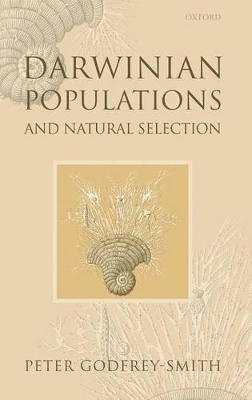
Darwinian Populations and Natural Selection
Seiten
2009
Oxford University Press (Verlag)
978-0-19-955204-7 (ISBN)
Oxford University Press (Verlag)
978-0-19-955204-7 (ISBN)
The book presents a new way of understanding Darwinism and evolution by natural selection, combining work in biology, philosophy, and other fields. It gives new criticisms of gene-centered views of evolution, and presents a new framework for understanding the evolution of complex organisms and societies.
In 1859 Darwin described a deceptively simple mechanism that he called "natural selection," a combination of variation, inheritance, and reproductive success. He argued that this mechanism was the key to explaining the most puzzling features of the natural world, and science and philosophy were changed forever as a result. The exact nature of the Darwinian process has been controversial ever since, however. Godfrey-Smith draws on new developments in biology, philosophy of science, and other fields to give a new analysis and extension of Darwin's idea. The central concept used is that of a "Darwinian population," a collection of things with the capacity to undergo change by natural selection. From this starting point, new analyses of the role of genes in evolution, the application of Darwinian ideas to cultural change, and "evolutionary transitions" that produce complex organisms and societies are developed. Darwinian Populations and Natural Selection will be essential reading for anyone interested in evolutionary theory
In 1859 Darwin described a deceptively simple mechanism that he called "natural selection," a combination of variation, inheritance, and reproductive success. He argued that this mechanism was the key to explaining the most puzzling features of the natural world, and science and philosophy were changed forever as a result. The exact nature of the Darwinian process has been controversial ever since, however. Godfrey-Smith draws on new developments in biology, philosophy of science, and other fields to give a new analysis and extension of Darwin's idea. The central concept used is that of a "Darwinian population," a collection of things with the capacity to undergo change by natural selection. From this starting point, new analyses of the role of genes in evolution, the application of Darwinian ideas to cultural change, and "evolutionary transitions" that produce complex organisms and societies are developed. Darwinian Populations and Natural Selection will be essential reading for anyone interested in evolutionary theory
Peter Godfrey-Smith is Professor of Philosophy at Harvard University. He is the author of Complexity and the Function of Mind in Nature (CUP, 1996) and Theory and Reality: An Introduction to the Philosophy of Science (Chicago University Press, 2003).
1. Introduction and Overview ; 2. Natural Selection and its Representation ; 3. Variation, Selection, and Origins ; 4. Reproduction and Individuality ; 5. Bottlenecks, Germ Lines, and Queen Bees ; 6. Levels and Transitions ; 7. The Gene's Eye View ; 8. Cultural Evolution ; Appendix. Models
| Erscheint lt. Verlag | 26.3.2009 |
|---|---|
| Verlagsort | Oxford |
| Sprache | englisch |
| Maße | 162 x 241 mm |
| Gewicht | 493 g |
| Themenwelt | Naturwissenschaften ► Biologie ► Evolution |
| ISBN-10 | 0-19-955204-5 / 0199552045 |
| ISBN-13 | 978-0-19-955204-7 / 9780199552047 |
| Zustand | Neuware |
| Haben Sie eine Frage zum Produkt? |
Mehr entdecken
aus dem Bereich
aus dem Bereich
Wie die Vernichtung der Arten unser Überleben bedroht - Der …
Buch | Softcover (2023)
Penguin (Verlag)
CHF 20,95


